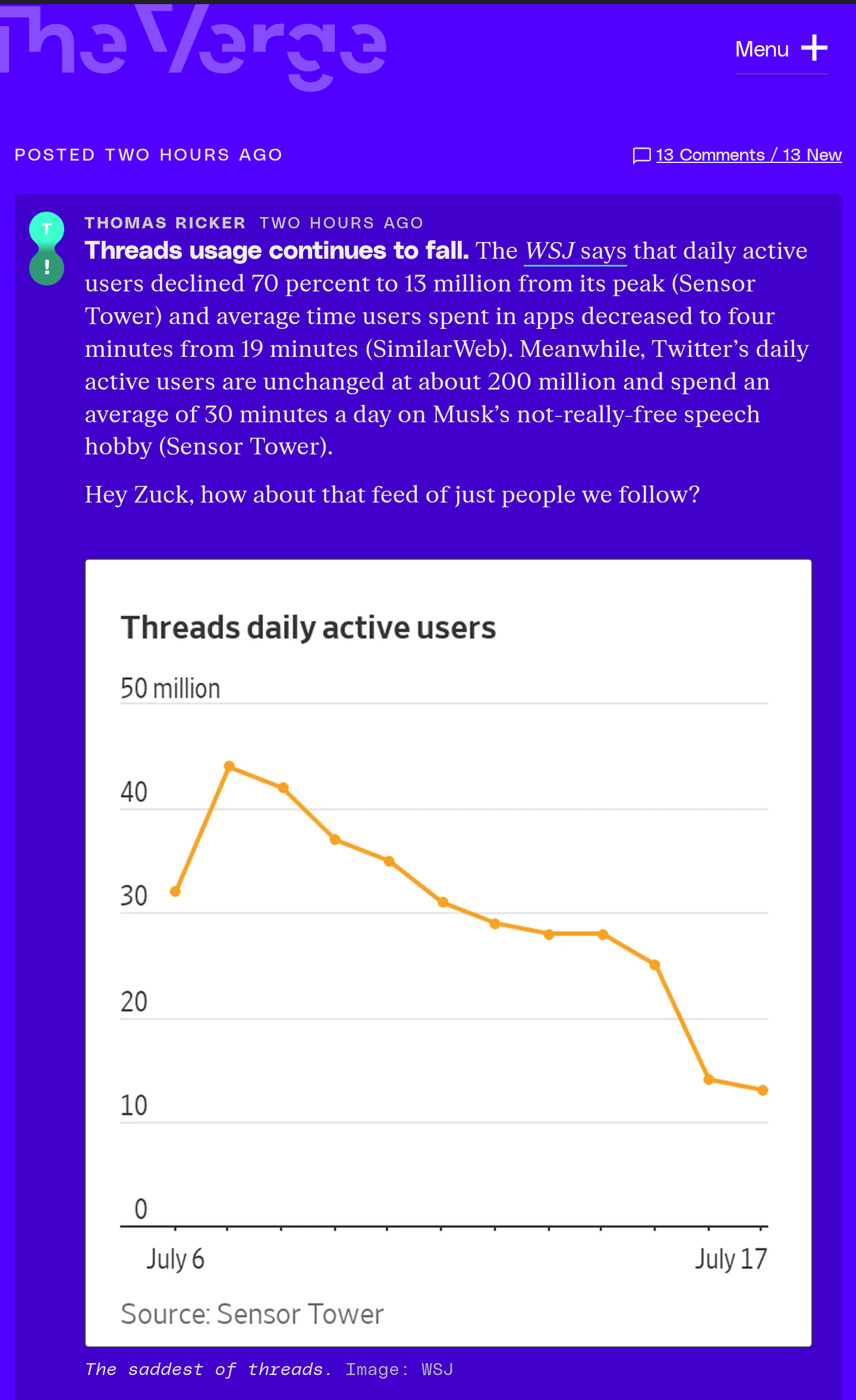Why would anybody think like it’ll die soon?
- 2 Posts
- 84 Comments

 3·11 months ago
3·11 months agoLol. I stopped paying when price grew from 4,99 a month.
I’ve watched 4K Youtube on that cpu without issues.

 4·11 months ago
4·11 months agoWould it be a good practice to install minimal Debian and learn to use Nix package manager with it?

 4·11 months ago
4·11 months agoYou’d expect MPV was published by MIT or Bell Labs in late 1970’s because it is so good, can do literally anything while remaining lightweight. But no, it is released in August 2013.

 1·11 months ago
1·11 months agoI have 4 icons displaying the current amount of volume with white background and for mute I use red background. It was super easy to set in the config file even I don’t speak C++.
Salvete iuvenes! Quid patriam Latinae loqui?

 1·11 months ago
1·11 months agoFor volume control, I use Wireplumber:
- To raise the volume bindsym XF86AudioRaiseVolume exec wpctl set-volume @DEFAULT_AUDIO_SINK@ 1%+
- To lower the volume bindsym XF86AudioLowerVolume exec wpctl set-volume @DEFAULT_AUDIO_SINK@ 1%-
- To mute/unmute the volume bindsym XF86AudioMute exec wpctl set-mute @DEFAULT_AUDIO_SINK@ toggle
- To mute/unmute the microphone bindsym XF86AudioMicMute exec wpctl set-mute @DEFAULT_AUDIO_SOURCE@ toggle
For icon I have configured the swaybar. I don’t use notifications, thus they’re simple to set for bindsym (above) if needed.

 38·11 months ago
38·11 months ago- built with electron
Didn’t you read the ToS? Those words are considered as hate speech in every Linux communities.
Try Neomutt.

 11·11 months ago
11·11 months agoDebian base with Sway.

 2·11 months ago
2·11 months agoI’m glad my answer satisfied you :)
- Raspberry Pi = arm based
- any regular computer/laptop you own = x86 based
So any computer or laptop which you have will work just fine. No matter how old it it is.
You can also compile the rom with RasPi but for some unknown reason it caused me unworking rom even it didn’t give aby errors. I contacted the developer and he said I should never compile anything with RasPi :D
I have no clue. I bet Ubuntu just ships with more processes running. Stsrting from booy and continuing during the use.

 15·11 months ago
15·11 months agoNobody will learn the command line without reading the docs.
So, best way to learn Linux for anybody is to buy the book named “Linux Bible 10th Edition” and read that.
Before opening that book, finishing vim-tutor will get anybody started.

 2·11 months ago
2·11 months agoMy tips comes from 3 librebooted X200s I’ve done (plus 1 fried due to user error by me):
- your most important tool is a heatgun with smallest possible nossle (or is it nozzle?)
- replace the stock WSON-8 nightmare chip with 8 mbit SOIC-8 chip
- take a photo of red dot on the WSON-8 before heating it, it shows you the right position/angle/side for the SOIC-8 chip too
- be aware that the whole bottom part (i.e. big area) of that nightmare WSON-8 stock chip is soldered
- do not compile libreboot with raspberry pi nor any sbc you’re using (use real x86 computer)
- when flashing, use slower spispeed than you’d use with Coreboot (older machine)
- soldering the SOIC-8 chip do not require any skills nor good vision (super easy task)
With a good and especially small nossled heatgun you don’t need to cover the motherboard at all. If you melt the plastc top cover of the WSON-8, it doesn’t mind but not necessary either. Just don’t melt the motherboard (small nossle!!!) and you’re all good. Use tweezers rather than pliers, because force is bad and when the super-high quality soldering tin is melted completely, the WSON-8 chip comes off even if you just blow on it.
Flash the 8 mbit SOIC-8 before soldering it onto the motherboard.
I have no lots of soldering skills/experience, but it is fairly easy task if you just have the small nossled heatgun.
And oh yeah, some guides suggests to solder jumpwires onto the stock WSON-8 chip rather than heating it off, but that approach was way too hard for my soldering skills even with the smallest possible tip on my Pinecil soldering iron.
“Regular” Mint = Ubuntu backend (Nvidia support) Mint Debian = More lightweight, but only Cinnamon and bad option for Nvidia gpu
It boots faster and is slightly more responsive as the link suggests. Neofetch has different logo.
It doesn’t have the driver manager so LMDE doesn’t play well with Nvidia gpus.

 31·11 months ago
31·11 months agoI recommend that you install Linux on the laptop alone! Linux will work on that hdd, but will be slower. If you can, buy an used ssd for it. 256 GB should be enough for a lot. That 1 TB hdd could serve you as a backup disk.
I also recommend to overhaul your laptop. Remove the dust with compressed air and reolace thermal paste (should be done every 2-3 years anyway).
I don’t know what this ‘gallium’ is. But your computer has a powerful x86 cpu, so any regular distro will work just fine.
Becuse it is your first distro, it should be something well documented (large user base) and stable.
I recommend you to format your biggest usb stick with Ventoy2Disk and it’ll be the last time you’ll ever format.
With Ventoy you can try any distro in Live mode without installing anything in your computer before you’re found your favorite.
Try at least Pop_OS! and LMDE5 (LMDE6 is released within a few weeks) over regular Mint and here’s why: https://forums.linuxmint.com/viewtopic.php?t=374128



Will Threads ever come popular?
I never had account in Twitter, but for me it looks like it’s become a honeypot for right-wing useful idiots. And it has gained a lots of attraction simply because the censorship was ended in just one night.